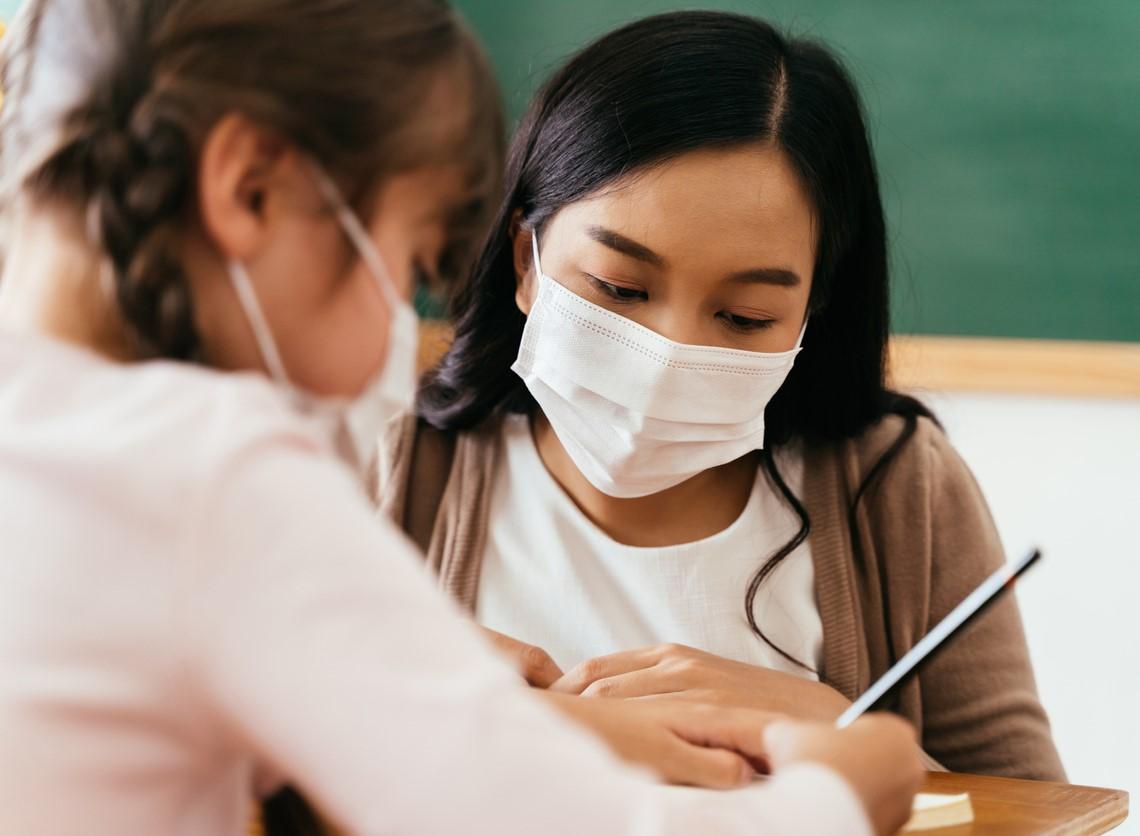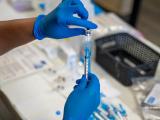As the nation braces for a torrent of COVID-19 infections caused by the new Omicron (B.1.1.529) variant, the White House today unveiled a new strategy to keep unvaccinated children in school rather than quarantining at home after a COVID-19 exposure.
The Test to Stay strategy involves testing close contacts of a COVID-19 student at least twice during the week after the exposure. If the contact tests negative, he or she can remain in school instead of waiting out a 2-week quarantine at home.
At a White House press briefing today, Centers for Disease Control and Prevention (CDC) Director Rochelle Walensky, MD, MPH, outlined two CDC studies today in Morbidity and Mortality Weekly Report showing how Test to Stay benefitted K-12 schools in Lake County, Illinois, and Los Angeles County, California, this fall.
In the Lake County study, secondary transmission among 90 schools using Test to Stay was 1.5%, preserving more than 8,000 in-person learning days. While close contacts didn't spread the virus at school, some passed it to household contacts.
The Los Angeles County study showed that one in five public schools adopted the Test to Stay strategy, with a higher percentage of disadvantaged schools electing not to participate. In participating schools, student COVID-19 rates did not increase, and close contacts did not appear to spread the virus. Nonparticipating schools, on the other hand, lost about 92,000 learning days.
"CDC is updating our materials to help schools and parents know how to best implement this promising and now-proven practice, along with our multilayer prevention strategies that will help keep our children in the classroom safely," Walensky said, emphasizing that the strategy is not a substitute for vaccination of kids 5 and up and the wearing of face coverings in school.
CDC advises mRNA vaccine over J&J
At the briefing today, Walensky also noted that the CDC is endorsing updated Advisory Committee on Immunization Practices (ACIP) guidance yesterday recommending that Americans receive an mRNA COVID-19 vaccine over Johnson & Johnson's shot.
The recommendation was based on vaccine effectiveness and safety, as well as rare adverse events and the US vaccine supply. Countries such as Canada and the United Kingdom have made similar recommendations.
"Given the current state of the pandemic both here and around the world, the ACIP reaffirmed that receiving any vaccine is better than being unvaccinated," the CDC said in a statement yesterday. "Individuals who are unable or unwilling to receive an mRNA vaccine will continue to have access to Johnson & Johnson's COVID-19 vaccine."
Pfizer COVID vaccine fails in 2- to 5-year-olds
In a study finding that was certainly disappointing to many parents of children 2 to 5 years, a low dose of the Pfizer-BioNTech COVID-19 vaccine did not produce a potent immune response in that age-group, the companies said today in a statement.
As part of an ongoing clinical trial of the vaccine, the companies used a 3-microgram dose (one-tenth of the adult dose) in children 6 months to younger than 5 years. While two doses generated an immune response similar to that in people 16 to 25 years in those 6 months to 2 years, it failed in 2- to 5-year-olds.
Pfizer and BioNTech said that they plan to test a third low dose in children 6 months to 5 years but don't expect to test a higher dose in children 2 to 5 years.
In other Pfizer news yesterday, the CDC said that it has received reports of eight cases of mild myocarditis (inflammation of the heart muscle) in children ages 5 to 11 who received the Pfizer vaccine, Reuters reports.
Omicron up more than 50% in 3 states
Also in anticipation of an onslaught of Omicron cases within the next few weeks, US public health officials are stockpiling sotrovimab, the one monoclonal antibody that appears to retain efficacy against the variant, according to the Washington Post.
The United States reported 138,885 new COVID-19 cases and 1,142 deaths yesterday, according to the Johns Hopkins COVID-19 tracker. The Washington Post tracker shows that the 7-day average of new daily cases is 124,110, with 1,275 daily deaths.
COVID-19 cases rose 10% week over week in 13 states, including Texas, Connecticut, and Hawaii, where they spiked over 50% from last week. New York made up 10% of new cases over the past week, CNN reports.
In New York, the state health department reported 18,276 new COVID-19 cases yesterday, the highest number since January 2020, NBC News reports. Over the past week, test positivity in New York City doubled in just 3 days.
Amid the city's rising infection rate, New York City Mayor Bill De Blasio announced a six-step strategy to head off a winter surge of COVID-19 infections, the New York Times reports. The plan involves distributing a million free KN95 masks and 500,000 at-home tests, opening more testing sites, increasing enforcement of mask and vaccine mandates, and promoting booster shots.
In Florida, the Omicron variant now makes up nearly 100% of strains in wastewater samples, ABC News reports.
Only 28% of Americans have had booster
Among all Americans, 61.2% are fully vaccinated against COVID-19, 72.4% have received at least one dose of vaccine, and 28.1% of fully vaccinated Americans have received a booster, according to the CDC's COVID Data Tracker.
And all US military branches have begun cracking down on troops who haven't been vaccinated against COVID-19, the Associated Press reports. Yesterday, the Marine Corps said it has discharged 103 Marines, and the Army said it has reprimanded more than 2,700 soldiers.






















